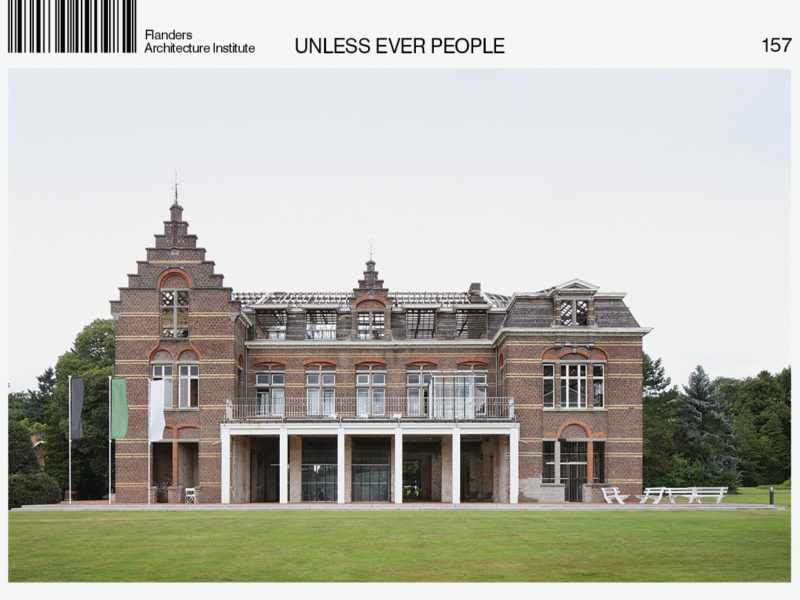Article
Note on the Representation of the Square
Gideon Boie
2018, VAi

How strange that a story that is all about people is represented by images without even the shadow of a living soul — I don’t remember the exact words, but this is what the editor of ArchiNed, Marina van den Bergen, said when commenting on an article on the ‘Kan. Triest Plein’ (‘Canon Triest Square’) at Caritas. She definitely hit the nail on the head. The question haunted me throughout the rest of the process. There are a few arguments to explain the paradox:
DIFFICULTIES IN DEPICTING HUMAN FIGURES IN THE CONTEXT OF MENTAL HEALTH CARE
There is the privacy issue which means that patients who appear in images (including in this book) must give their consent. Equally important is the danger of reproducing the stereotypical image of the psychiatry centre as a place for the miserable and the insane and of continuing to stigmatize mental healthcare through architecture photography.
THE IMPOSSIBILITY TO REPRESENT THE EVERYDAY
Architecture photography that does include human interactions often betrays a rather compulsive character. It is never clear whether the everyday scenes were staged or not.
THE IMPOSSIBILITY OF REPRESENTING PARTICIPATION
Today, participation in architecture comes with lively images of people exchanging ideas around the table. Again, professional photography casts doubt over the spontaneity of the situation. One could say that genuine participation can only be presented with clumsy and unclear images. The documentation is part of the action itself, demonstrating that things can be done differently.
THE IMPOSSIBILITY OF REPRESENTING A PROCESS
Vision development works through the slow process of finding the right words and images for the needs and desires by the people involved. The material consists of notes of discussions, images borrowed from others, observations sketched on paper, and so on. Since all these things provoke new thoughts and feedback, they sublate in the creative process, being repeated at a greater magnitude in the final result.
We could construct more arguments for sure. In any case, the images of the Kan. Triest Plein challenge us to unpack the final product and to discover the thousand layers of signification of a reality that is so hard to represent.
Chapter from the book: Gideon Boie, “Note on the Representation of the Square”, in Unless Ever People, Gideon Boie and architecten de vylder vinck taillieu, eds. (Antwerp: Flemish Architecture Institute, 2018), 316-317.
Tags: Care, English, Psychiatry
Categories: Architecture
Type: Article




